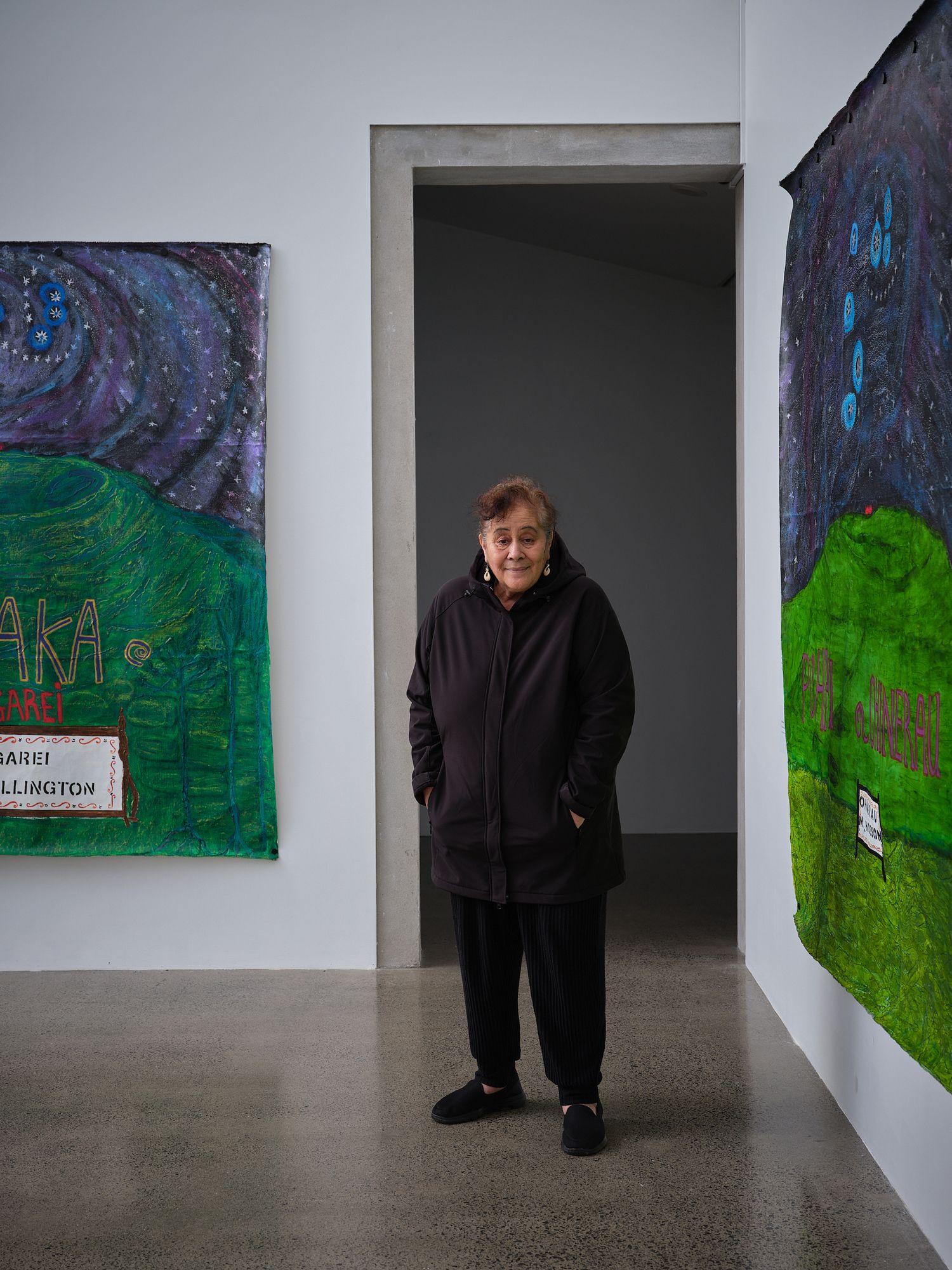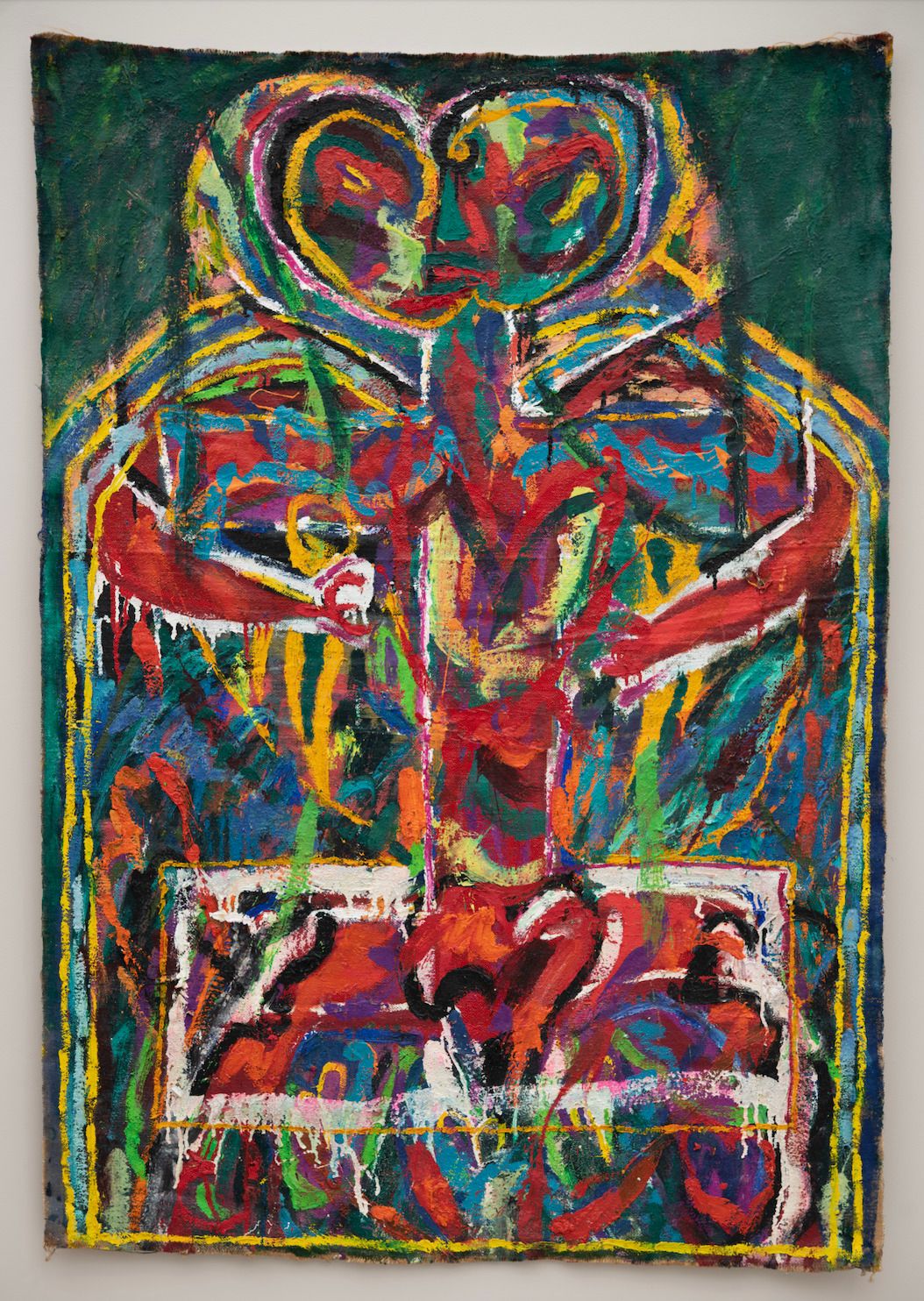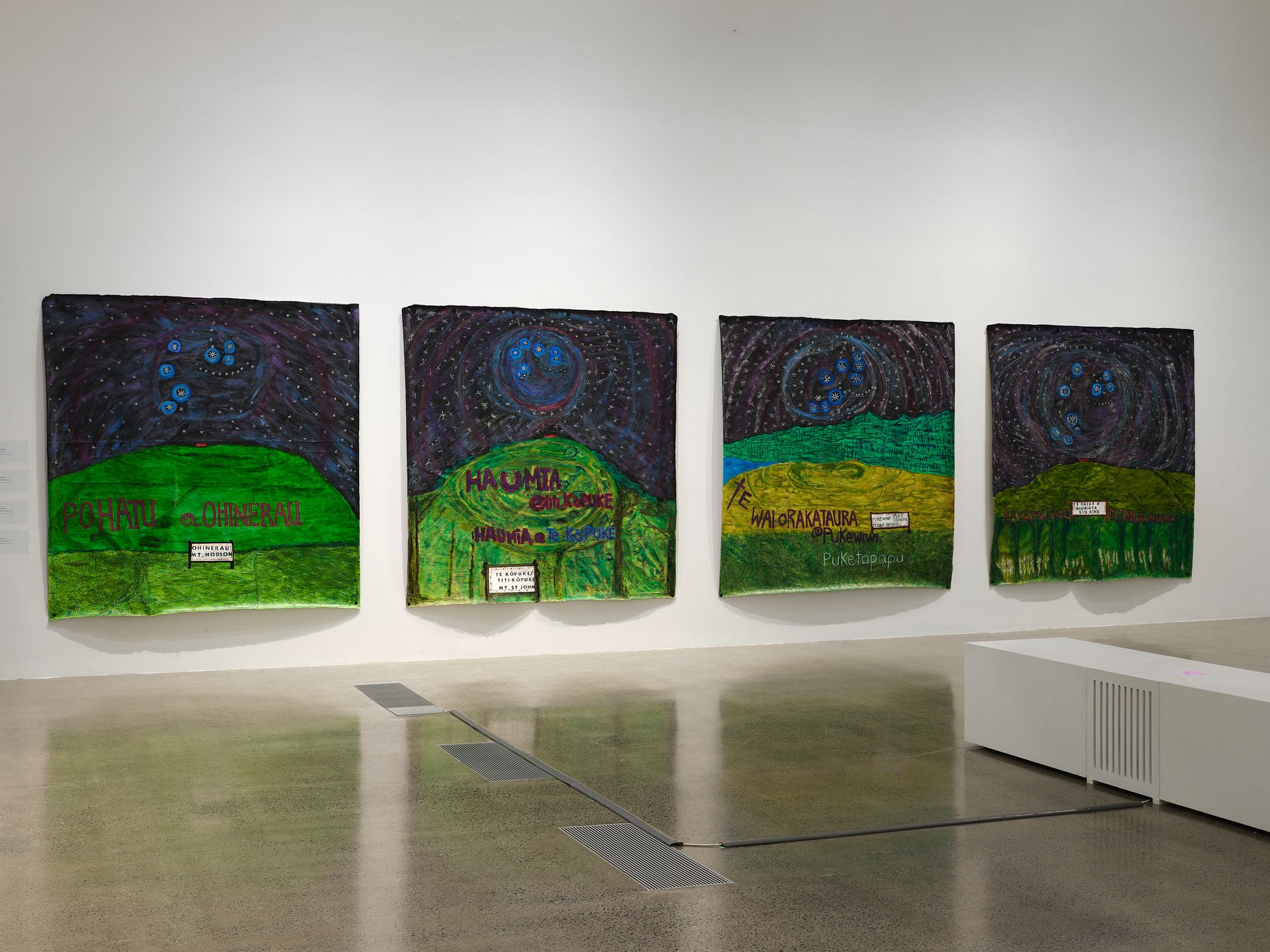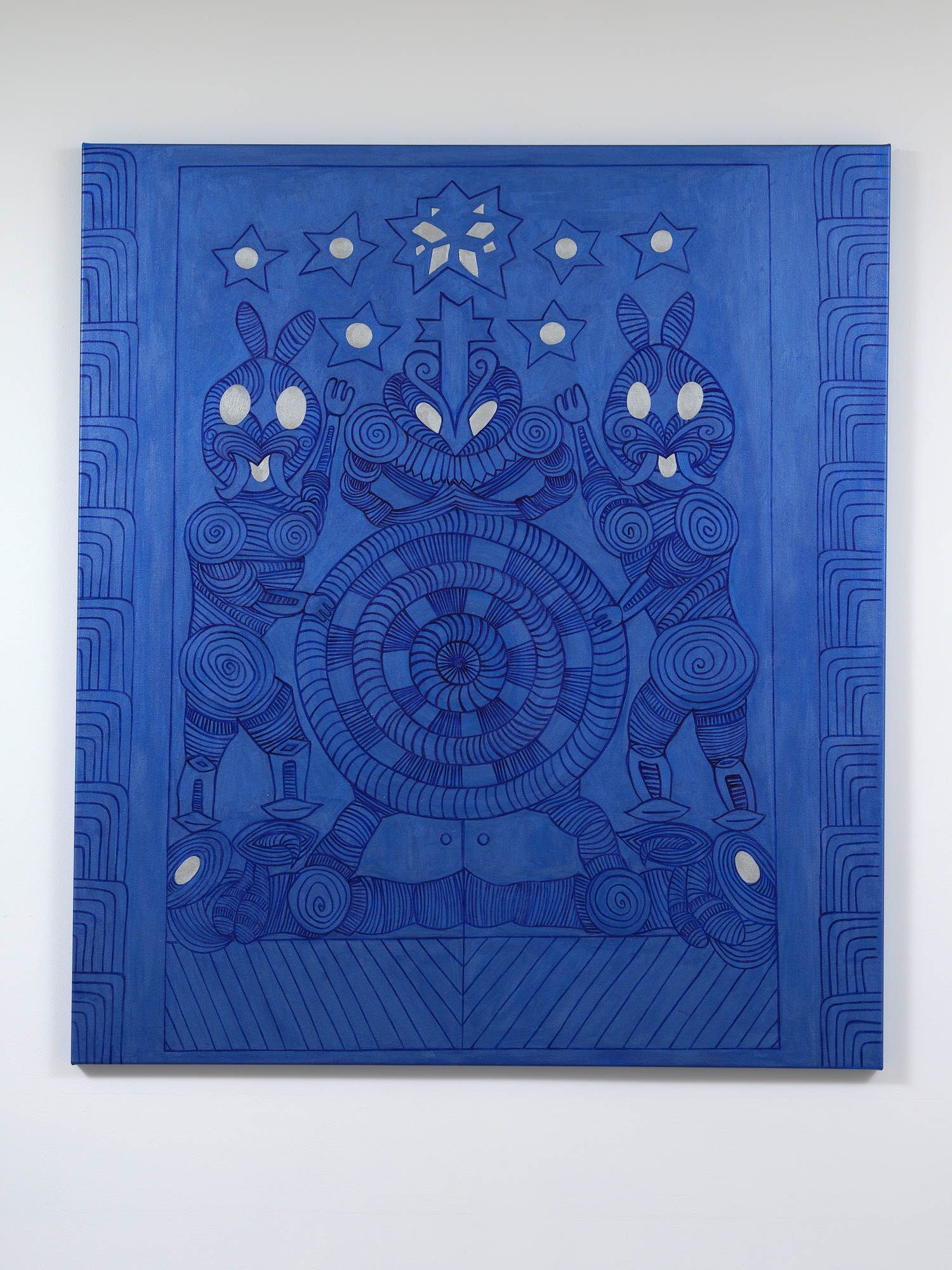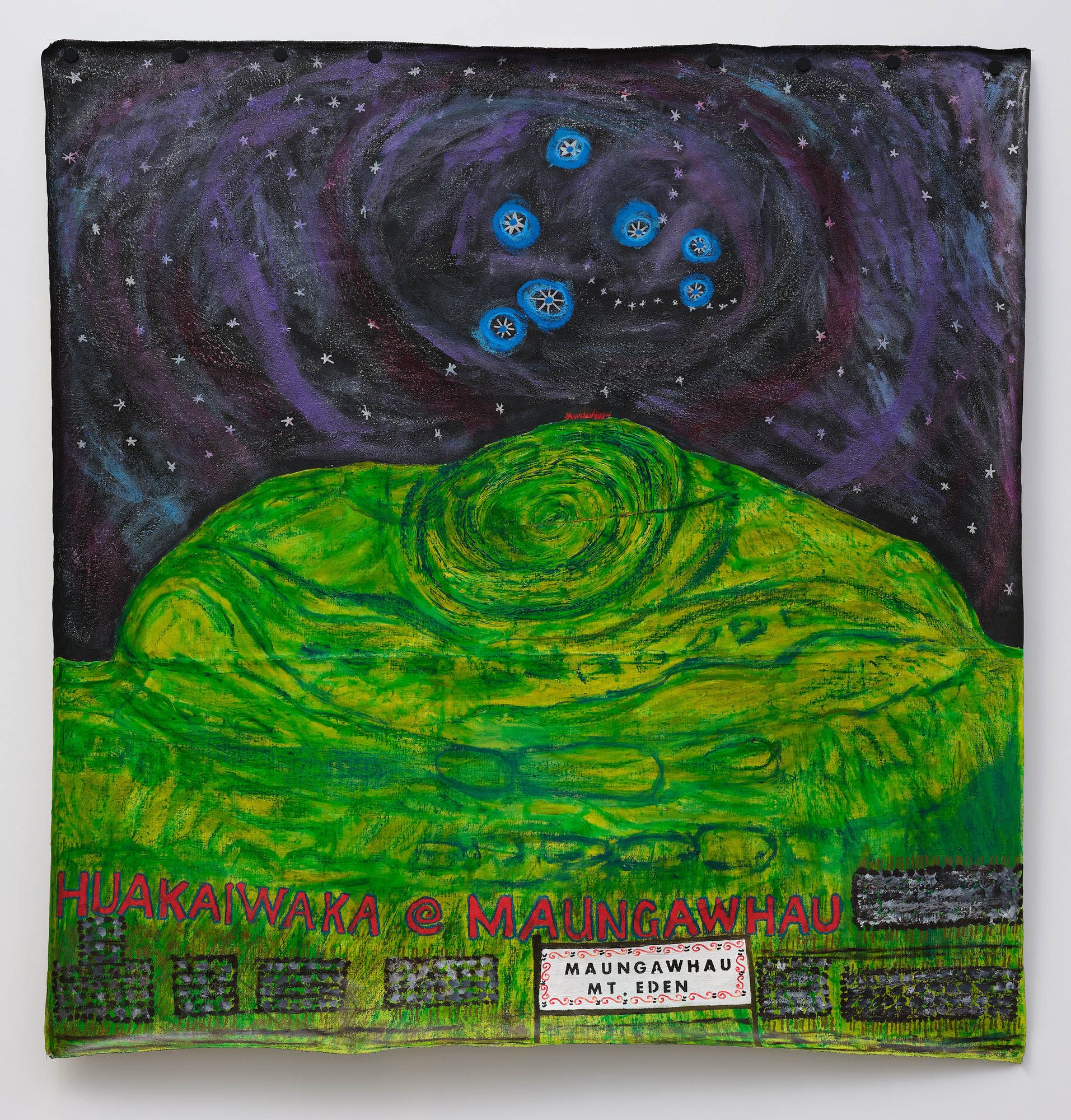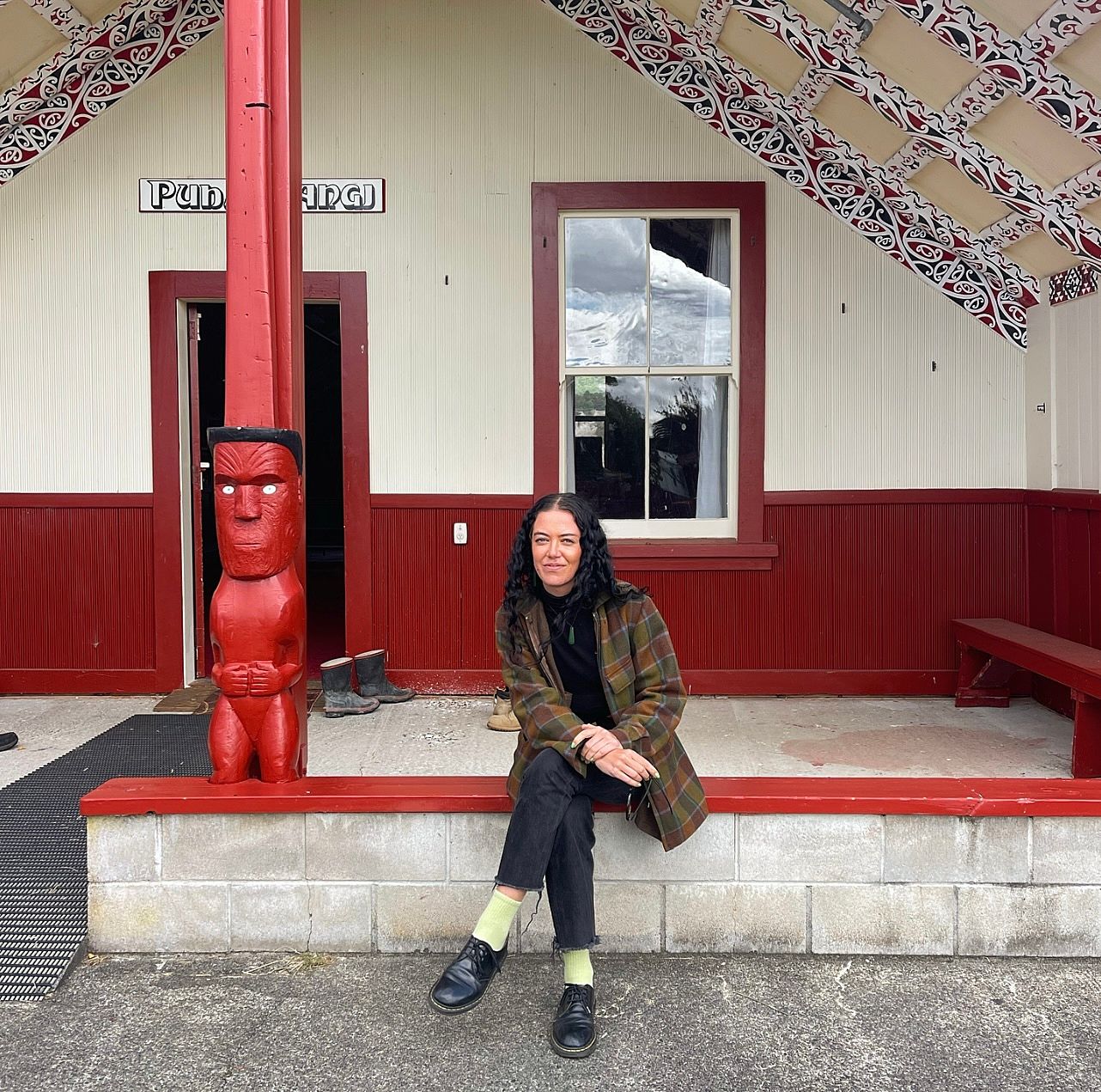An Ode to Emily Karaka
Delilah Pārore Southon on the Artistic Essence and Wairua of Emily Karaka, in response to Matariki Ring of Fire.
It was a Venus full moon last July in the 09, when I first visited Toi Tū Toi Ora: Contemporary Māori Art at Auckland Art Gallery Toi o Tāmaki. Seasonally, Tāmaki weather was in its L era. A confusing time climate-wise when you don’t know what the next hour will bring, so every outing involves considered thought and easy outfit switch-ups. One of those days when Papatūānuku puts on a dramatic display of four seasons in one day. Boasting rain showers, humidity, misty drizzle in between teasing patches of sun over the course of 24 hours on the Gregorian watch. The energy of the city vibrated with the remnants of city dwellers’ hibernation and mid-pandemic winter blues. It was one of those afternoons when the smell of High Street sticks to you for hours after. The post-Matariki afternoon vibe was in full swing, and the serenade of Little Simz’ poetic playing of the grammar piano was on repeat in my taringas. I was in my winter glow-up, internally deep-diving within, navigating my icks, things I found high-level cringe, and the path I wanted for myself as I moved into the next phase of my life. As I dawdled through Albert Park, Tāwhirimātea softly echoed the whispers of the ghosts found in bygone eras.
At that time of my life, day by day, I was seeking signs in every form. Signs, synchronicities and tohu that I thought would somehow illuminate a big ol’ magic path that had all the answers I was seeking; something to jump on and run towards in an ode to escape the monotony of everyday life. Although, this particular day, I found myself eagerly present, not seeking anything. Just the presence of my own wairua, a good joint and enough Toi Māori to make your spine tingle. Nostalgia-less, and still within the Rātapu Sunday rain haze, my overly romantic view on the world was stasis.
In the Auckland Art Gallery, the stark white walls caved in around the abundance of vibrant hues that layered the walls. Red, black and white taking full sovereignty throughout the exhibition. The expression of artistic Rangatira such as Ralph Hotere, Robyn Kahukiwa, Cliff Whiting, Star Gossage, Lisa Reihana and Buck Nin, among others. Illuminating their brave display of self-tikanga, which I refer to as ‘the art of pursuing your exuberance’, laid bare for wanderers passing by. Each piece of work offering its own story, its own whakapapa. The dance of tūpuna was felt as the wairua poured from each work, bouncing from ceiling to floor, I kept thinking to myself how cool it was that I’d just walked into ancient folklore. Mid-journey, I was struck by a zing of force deep in my puku. A particular painting sent my body into a smooth melting sensation, just like Nina Simonedoes singing ‘Suzanne’ – it swept me into an evanescence of hidden dreams.
Its colours looked like a chakra explosion had met a gorgini old gig poster in the backstreets of Karangahape Road. Its harsh brush-strokes reminded me of the multi-coloured mural on the side of the dairy at the end of my nan’s street in Papatoetoe, South Auckland. It reeked of Tino Rangatiratanga. It shone like the vibrant hot-pink auras of my nannies and kuia at Te Houhanga Marae in the Far North. And it cackled with the vibrancy you’d find doing the dishes with your cousins after tea at the marae, as you use tea towels as make shift rakau. It looked like what I imagined being a free wahine toa would embody – a wahine toa with a pāua-shell-coloured aura.
"It cackled with the vibrancy you’d find doing the dishes with your cousins after tea at the marae, as you use tea towels as make shift rakau. It looked like what I imagined being a free wahine toa would embody – a wahine toa with a pāua-shell-coloured aura."
Emily Karaka Coming Through, 1983 oil on hessian, 1330 x 920mm Auckland Art Gallery Toi o Tāmaki, purchased 1983 Image courtesy of the artist and Toi o Tāmaki
That painting was Emily Karaka’s Coming Through from 1983.And I think it did what it was supposed to do that day. It breathed its own form, took its own shape, and came alive. Its mauri so strong it jumped out into my wairua. Boundless energy that met my mind and body like an electric shock. Truly mysterious and tinkering on being malleable to my searching mind. A reminder that storytelling carries with it social and moral responsibilities. It is a taonga.
A phantasmagoria of colour made up of harsh bright brush-strokes in bright pink, yellow, black, orange and lime green all smothered, and texturally laid upon a dark kakariki canvas. Layered with dark outlines of two figures embracing each other, caressing in a gentle hold. Coming Through looks like two lovers, two hearts, entwined souls, the whare tangata, and a mother and child all in one. A powerful representation of manaakitanga, motherhood and the vitality we receive from Papatūānuku as our earth mother. A visual aid for what lies within the essence and heart of generosity and care for others.
Its intimate nature fed the essence of what I envision the love affair between Ranginui and Hinenuitepō to hold. It reminded me of the wahine-power you find in a tarot card session with the astro-girlie aunties on a Friday night, chain smoking while you untangle the modernities of city-gal living. It was intense. It was magic. It drew me in between purple veils. Darkly expressive, softly romantic, inviting and so, so, SO fun.
I felt it cleared the internal haka I had ringing through my mind. Its colours, so rich, raw – oozing the vulnerabilities of what it meant to show your ‘Māoriness’. The work shifted my mind into a new place. I believe it was the duality of aroha. A balance point of being. To truly see.
'Its intimate nature fed the essence of what I envision the love affair between Ranginui and Hinenuitepō to hold. It reminded me of the wahine-power you find in a tarot card session with the astro-girlie aunties on a Friday night, chain smoking while you untangle the modernities of city-gal living. It was intense.'
Needless to say, it reached new feelings within me, unspoken ones that I didn’t realise I actually held, ones that didn’t fit into a conventional box. And like great paintings do, it called me with profound resonance, inviting my own truth into the landscape of its metaphors.
This moment garnered and reiterated a new-found perspective for me. A whole-hearted embrace of what it truly means to be living in strength as a wahine toa in a modern world – the navigation and exploration of bravery it takes to step into the essence of such belief and let your wairua fully dazzle. The painting set me on an inner mission to levitate within the walls of my own peace of mind. Karaka’s caress of colour highlighted where my own colour wasn’t shining.
Emily Karaka is of Waikato and Ngāpuhi (Ngāti Hine, Ngāti Kahu o Torongare, Ngāi Tai ki Tāmaki, Te Kawerau ā Maki, Ngāti Tamaoho, Te Ākitai Waiohua, Ngāti Rori-Te Ahiwaru, Ngāti Mahuta and Ngāti Tahinga) descent. She has lived in Tāmaki Makaurau all her life. And her body of work Matariki Ring of Fire at Te Uru Waitākere Contemporary Gallery holds the same space for me as Coming Through does.
Emily Karaka, Matariki Ring of Fire, 2022. Courtesy of the artist and Te Uru. By Sam Hartnett.
Within the series of 17 paintings of varying scales, Emily expresses and alchemises visual intimacies of the mind and wairua in the use of the maunga dotted across the Tāmaki Makaurau whenua. In alignment with the celebration of Matariki, it is a showcase of the celebrations taking place upon the Tāmaki Makaurau whenua. The exhibition text quotes: “Ngā Tūpuna Maunga o Tāmaki Makaurau represent the tūpuna and whakapapa of the mana whenua of Tāmaki Makaurau. Ceremonial fires at te tihi, the summit, of each of the Tūpuna Maunga greet the majestic stars of Matariki, connecting us through time with ngā atua, the Māori deities and the taonga of our tūpuna – knowledge.” Through the practice of ahi kā, the lighting of ritualistic fires at these sacred locations, past, present, and future are brought together in an encompassing body of deep-blue hues, in an ode to the whenua. This series of work is vivifying, sharp, chaotically curious and also, in the same breath, clarifying.
It feels to me as if Emily Karaka is living her tūpuna’s wildest dreams, and initiating that deep feeling in your puku, which doesn’t come too often in today’s world. Put simply, it is my strong belief that her expression is activating change and perspective in the next generation of Indigenous thinkers, movers, makers, creators and feelers. It signifies the re-rising of the Tino Rangatiratanga flag. Creating new, modern mythologies of the mind, her bold colour palette is a reminder of the internal chaos that reigns when you’re held in the arms of Hinenuitepō – when you’re lost and drifting amidst decision and changing pathways. It exudes confidence to jump in leaps and bounds even though the path before has been unstable. You can’t build solid foundations on rocky ground, and work like Matariki Ring of Fire reminds you of the internal strength you need to fly in new directions.
'Its gentle relatability opens you to the unseen and the vibrant language that you find there. A language that flows with the significant power of manaakitanga. The maternal-coloured reds, like the clay from Hineahuone that bridges the gap between calamity and surrender. Karaka creates grace between two realities, a place where grace has no backbone, only power and limitless desire.'
Its gentle relatability opens you to the unseen and the vibrant language that you find there. A language that flows with the significant power of manaakitanga. The maternal-coloured reds, like the clay from Hineahuone that bridges the gap between calamity and surrender. Karaka creates grace between two realities, a place where grace has no backbone, only power and limitless desire.
The wisdom of her tūpuna shines through the poised structure of each work. The mountains are inscribed with names of founding chiefs of Tāmaki Makaurau that express the whakapapa of the maunga. Her refined and unique portrayal of light ancient markings that splash across the canvas are a spellbinding portrayal of the wisdom of those who have come before us. Matariki Ring of Fire vibrates with potential meaning. There is a deep brevity within each painting – they hold their own mauri and gentle wit. They craft a metaphorical bridge for artists to walk across, a bridge woven in the knowledge of our tūpuna – a desire for change, and an ode to emergent strategy. These works sit in their own comfortable space, breathing feelings and perspective into the observer.
Emily Karaka, Matariki Ring of Fire, Te Paki o Matariki, 2022. mixed media on linen. Courtesy of the artist and Te Uru. By Sam Hartnett.
Emily’s work is intimately concerned with her unique perspective, but is so relatable to all those who seek escape. The ancient karakia that flows through to put this mahi on a canvas is an ode to her dedication to keep on walking amidst many pathways. To choose the one at the core, and face the urgent need for kōrero about what the future of Tino Rangatiratanga holds.
There is a modern mysticism to being Māori, which I believe is to be curious, vibrant, proud, brave, determined, and willing to throw all your colours on the next blank canvas in front of you. I encourage you, in this chaotic and overly pedantic time of paranoia and bullshit, to taste and feel art of any form like this and save it in the sensory archive within your wairua. The day will come when you tap back into that piece of work and find the key to unhinge whatever has been holding you back from your destiny. It’ll weave into your reality, and the pāua-shell aura will glow with your kete of knowledge like a healing elixir.
Emily Karaka, Maungawhau, 2022, mixed media on unstretched linen. Image courtesy of the artist and Te Uru. By Sam Hartnett
Ngā mihi nui to Whaea Emily Karaka for her mahi. To me, it is as if she is initiating the urge, that deep feeling in her puku, and packaging it up as a koha for others. Work like this reimagines the unknown. An unrealised state that is constantly evolving and changing. Evoking the fact that the unknown is, actually, new possibility. You can’t quite put your finger on it but it’s there, becoming. Through the dawning moon of the mind, you can feel that huge vague something with your body, but you can’t touch it with your mind. An expression that is hopefully activating change and perspective in the next generation.
All in all, maybe the day we stop seeking, we find a garden that doesn’t need watering. We push our gaze to what’s been there forever and we find that the roots are already in the whenua, they just need a bit of a tutu, light pruning and weeding. We are the rongoā, and Emily Karaka reminds us of that.
Whāia te iti kahurangi ki te tūoho koe me he maunga teitei.
Aim for the highest cloud, so that if you miss it you will hit a lofty mountain.
Emily Karaka Matariki Ring of Fire
18 June – 18 September 2022
Te Uru Waitākere Contemporary Gallery
